Contents
Guide


1999, 2003, 2014 by John A. Nelson and Fox Chapel Publishing Company, Inc., East Petersburg, PA.
Scroll Saw Workbook, 3rd Edition (ISBN 978-1-56523-849-7, 2014) is a revised edition of
Scroll Saw Workbook, 2nd Edition (ISBN 978-1-56523-766-7, 2003), published by Fox Chapel Publishing Company, Inc. Revisions include new photographs, revised text, and a new index. The patterns contained herein are copyrighted by the author. Artists may make three copies of these patterns for personal use and may make any number of projects based on these patterns.
The patterns themselves, however, are not to be duplicated for resale or distribution under any circumstances. Any such copying is a violation of copyright law. Interior Photography: Carl Shuman, Owl Hill Studios/Deborah Porter Hayes Cover Photography: Carl Shuman, Owl Hill Studios Print ISBN 978-1-56523-849-7
eISBN 978-1-60765-163-5 Library of Congress Cataloging-in-Publication Data Nelson, John A., 1935 Scroll saw workbook / John A. Nelson. -- 3rd edition. pages cm Includes index.
ISBN 978-1-56523-849-7 1. Jig saws. 2. Woodwork--Patterns. I. Title.
TT185.N36 2014 745.513--dc23 2014008821 To learn more about the other great books from Fox Chapel Publishing, or to find a retailer near you, call toll-free 800-457-9112 or visit us at www.FoxChapelPublishing.com. Note to Authors: We are always looking for talented authors to write new books. Please send a brief letter describing your idea to Acquisition Editor, 1970 Broad Street, East Petersburg, PA 17520. For a printable PDF of the patterns used in this book, please contact Fox Chapel Publishing at , with 9781565238497 Scroll Saw Workbook in the subject line.
CONTENTS
Preface

Welcome to the world of scrolling. Joyce and I think you will find scrolling rewarding, relaxing and just plain FUN! Whether youre just beginning or have had some experience with scrolling, you will find something in this book that will help you enjoy scrolling even more than you do now.
This book is based on our many years of teaching basic and advanced scroll saw classes throughout the country. Each time we teach a class, we learn something new ourselves, and we would like to pass all we have learned on to you, the reader of this book. The instructions in this book are based on and follow the classes we have taught. Both Joyce and I want to make it known at the outset that we do not consider ourselves experts on scrolling, so please do not consider us such. We are just passing on what knowledge we do have. We plan to learn much more about scrolling before we are done.
We believe in the saying, You learn something new everyday! In fact, we have found in our travels that we can learn a lot just meeting and talking with people. If you can cut out a simple project such as a teddy bear, you can cut out a larger project like our Chimes of Joy clock. Both use the same basic scroll saw techniques. The only difference is that the clock requires more cuts. We want to thank Dan ORourke of Dublin, New Hampshire, for testing and doing all the projects in this book (Dan had never used a scroll saw before. His finished works are featured in the exercises.); Deborah Porter Hayes of Hancock, New Hampshire, for taking all the photos; and Francis McKenna, owner of Fine Woodworking in Dublin, New Hampshire, for lending us his workshop/showroom to take the photographs.
Last, but not least, we would like to thank Alan Giagnocavo and the staff at Fox Chapel Publishing. Without their help and input this book could not have been published. It is our sincere hope that Scroll Saw Workbook will open up a whole new world of scrolling to you. Please, feel free to drop Fox Chapel a note if you have any questions, suggestions or criticisms. We would love to hear from you. Happy Scrolling! John A.
NelsonJoyce C. NelsonNarragansett, Rhode Island
Introduction: How to Use This Workbook
The first part of this book comprises a variety of information about scroll saws. If you are unfamiliar with the history of scroll saws, youll want to read through the History of Scroll Saws. For an introduction to the scroll saws that are currently on the market, see Scroll Saws. Weve also included information about blades, accessories and materials that can be used with scroll saws. The hands-on part of this book begins with Getting Started.
Be sure to read through this section before you continue with the exercises. Each exercise has an Objective. The objective explains what we want you to learn in this exercise. Note each objective before starting, so you will know exactly what you will be doing in each exercise. After studying the exercise, select and prepare the wood and materials needed for the exercise. Follow each step in the exercise in the order given.
When completed, compare your finished exercise with the objective. If you are not completely satisfied with the results or do not feel completely competent in this particular exercise, redo the entire exercise. It is important that you understand and can execute each exercise before you proceed to the next exercise. At the end of this book youll find an appendix listing a number of scroll saw-related suppliers.
History of Scroll Saws
Most people think scrolling started back in 1974 when Helmut Abel of West Germany was granted an International patent for a new scroll saw. of New Castle, Delaware, introduced the Hegner scroll saw to America. of New Castle, Delaware, introduced the Hegner scroll saw to America.
Others trace scroll sawings origins back to 1986 when Patrick Spielman published his wonderful book, Scroll Saw Handbook. In fact, scrolling didnt start with any of theseit all really started way back in the 1500s or so. The very first thin scroll saw blades were made by an early German clockmaker. I read some time ago that the first person actually associated with scrolling was Andre Boulle of Paris, France, in or around 1775. Today there is a famous wood-working school in Paris that is still using Boulles name. From 1850 to 1920 scroll sawing in America was as popular as it is today. Many women and children did scrolling back then to supplement the household income, much as we do today.
During those years, there were many companies supplying patterns for the scroll saw, just as today. H.L. Wild of New York City was one of the biggest scroll saw pattern suppliers of the day (from 1880 to 1920). Many of these wonderful, original patterns are being sold today by myself and other scroll saw pattern suppliers. 
 Many of the patterns in some of my scroll saw books are re-designs of these original project patterns. I have tried to record these wonderful original patterns for all times.
Many of the patterns in some of my scroll saw books are re-designs of these original project patterns. I have tried to record these wonderful original patterns for all times.

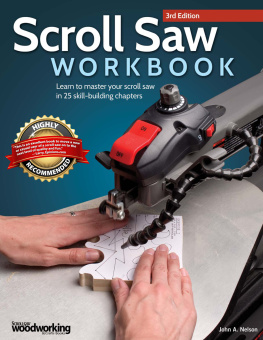
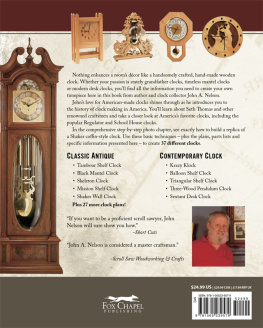

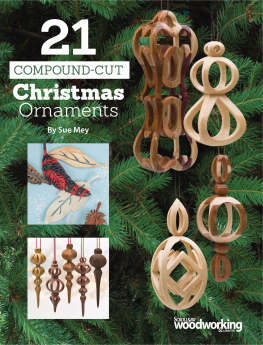
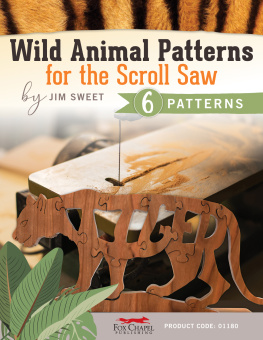
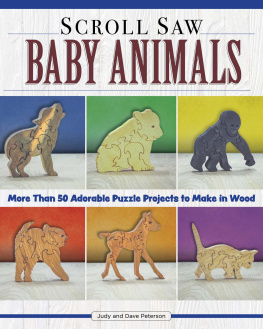


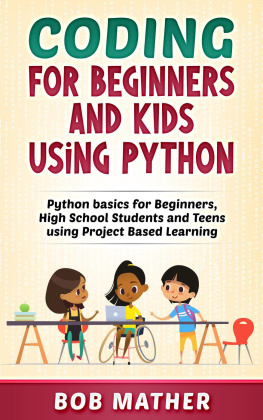
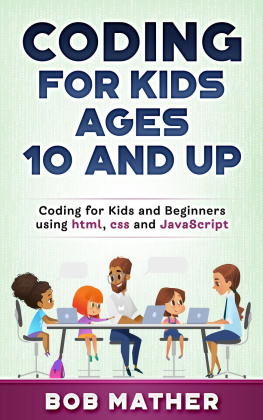

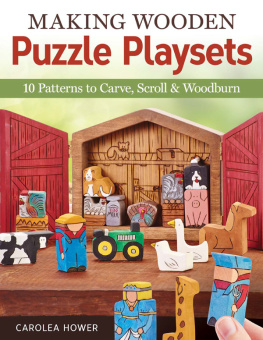
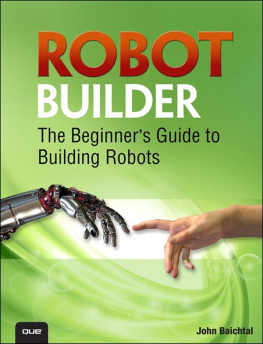


 1999, 2003, 2014 by John A. Nelson and Fox Chapel Publishing Company, Inc., East Petersburg, PA. Scroll Saw Workbook, 3rd Edition (ISBN 978-1-56523-849-7, 2014) is a revised edition of Scroll Saw Workbook, 2nd Edition (ISBN 978-1-56523-766-7, 2003), published by Fox Chapel Publishing Company, Inc. Revisions include new photographs, revised text, and a new index. The patterns contained herein are copyrighted by the author. Artists may make three copies of these patterns for personal use and may make any number of projects based on these patterns.
1999, 2003, 2014 by John A. Nelson and Fox Chapel Publishing Company, Inc., East Petersburg, PA. Scroll Saw Workbook, 3rd Edition (ISBN 978-1-56523-849-7, 2014) is a revised edition of Scroll Saw Workbook, 2nd Edition (ISBN 978-1-56523-766-7, 2003), published by Fox Chapel Publishing Company, Inc. Revisions include new photographs, revised text, and a new index. The patterns contained herein are copyrighted by the author. Artists may make three copies of these patterns for personal use and may make any number of projects based on these patterns.  Welcome to the world of scrolling. Joyce and I think you will find scrolling rewarding, relaxing and just plain FUN! Whether youre just beginning or have had some experience with scrolling, you will find something in this book that will help you enjoy scrolling even more than you do now.
Welcome to the world of scrolling. Joyce and I think you will find scrolling rewarding, relaxing and just plain FUN! Whether youre just beginning or have had some experience with scrolling, you will find something in this book that will help you enjoy scrolling even more than you do now. 
 Many of the patterns in some of my scroll saw books are re-designs of these original project patterns. I have tried to record these wonderful original patterns for all times.
Many of the patterns in some of my scroll saw books are re-designs of these original project patterns. I have tried to record these wonderful original patterns for all times.